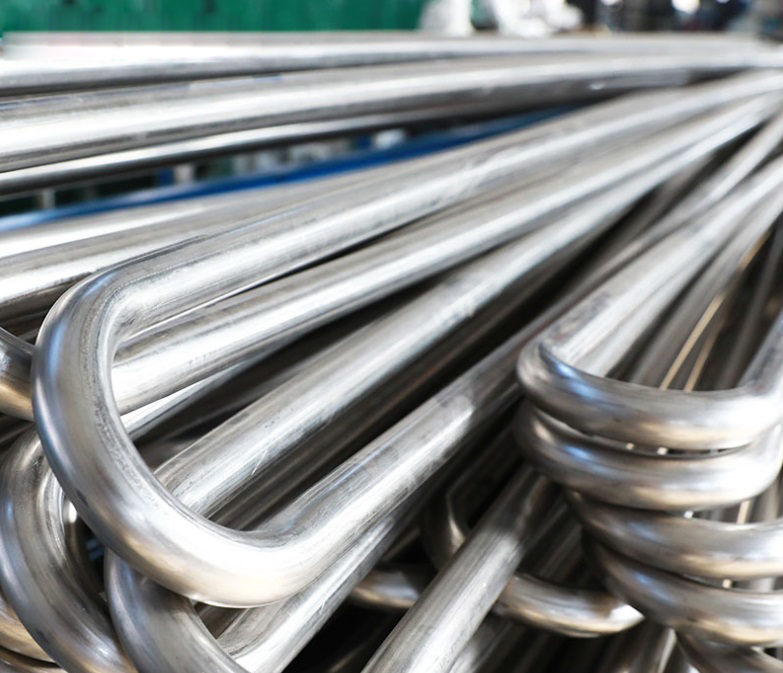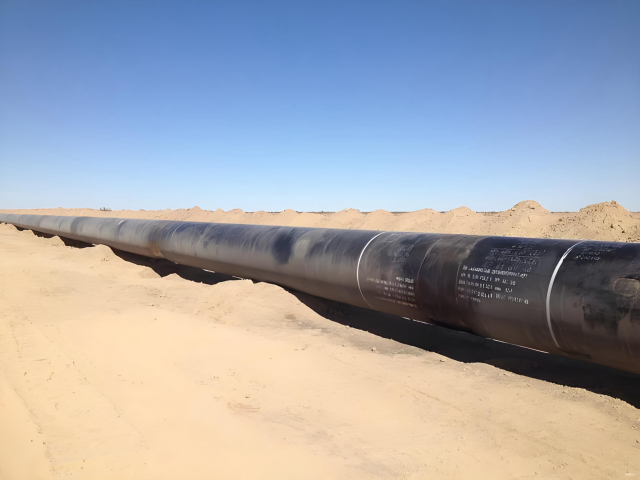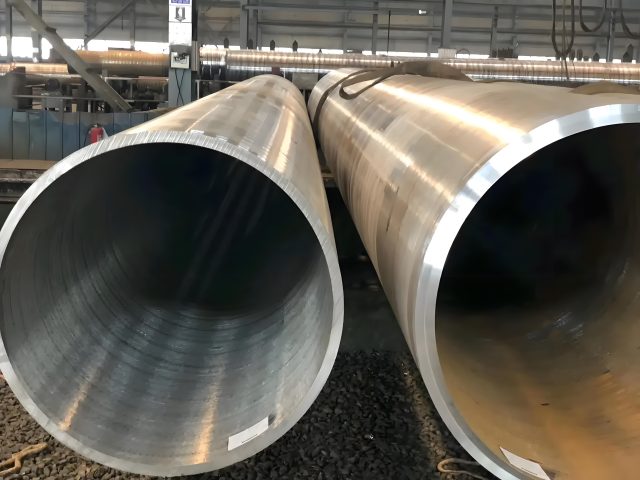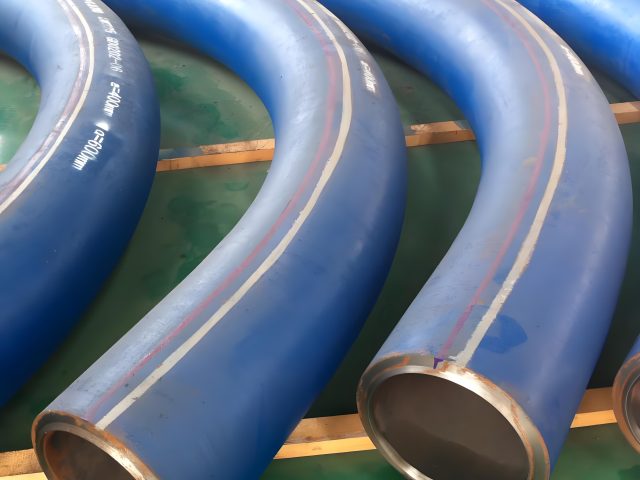A249 316/316L Stainless Steel Heat Exchanger Tube

A Comprehensive Guide to A249 316/316L Stainless Steel Heat Exchanger Tube
Introduction
Stainless steel tubes are integral components in various industries due to their durability, corrosion resistance, and versatility. Among the numerous grades available, A249 316 and 316L stainless steel tubes stand out for their exceptional properties, making them a preferred choice in demanding applications. This article provides an in-depth exploration of A249 316/316L stainless steel tubes, covering their composition, properties, applications, manufacturing processes, and maintenance practices.
1. Understanding A249 316/316L Stainless Steel Heat Exchanger Tube
1.1 Composition and Properties
A249 316 and 316L are austenitic stainless steels, known for their high chromium and nickel content, which contribute to their excellent corrosion resistance. The primary difference between the two lies in their carbon content:
- 316 Stainless Steel: Contains a higher carbon content, providing increased strength at elevated temperatures.
- 316L Stainless Steel: The “L” stands for “low carbon,” meaning it has a lower carbon content, enhancing its weldability and reducing the risk of carbide precipitation.
Composition Table
| Element | 316 (%) | 316L (%) |
|---|---|---|
| Chromium (Cr) | 16.0 – 18.0 | 16.0 – 18.0 |
| Nickel (Ni) | 10.0 – 14.0 | 10.0 – 14.0 |
| Molybdenum (Mo) | 2.0 – 3.0 | 2.0 – 3.0 |
| Carbon (C) | ≤ 0.08 | ≤ 0.03 |
| Manganese (Mn) | ≤ 2.0 | ≤ 2.0 |
| Silicon (Si) | ≤ 0.75 | ≤ 0.75 |
| Phosphorus (P) | ≤ 0.045 | ≤ 0.045 |
| Sulfur (S) | ≤ 0.03 | ≤ 0.03 |
Properties Table
| Property | 316/316L Description |
|---|---|
| Density | ~8.00 g/cm³ |
| Melting Point | 1371 – 1399°C |
| Tensile Strength | ≥ 515 MPa |
| Yield Strength | ≥ 205 MPa |
| Elongation | ≥ 40% |
| Thermal Conductivity | ~16.3 W/m·K |
| Coefficient of Thermal Expansion | ~15.9 µm/m·K (at 20-100°C) |
| Corrosion Resistance | Excellent in chloride and acidic environments |
1.2 Key Differences Between 316 and 316L
- Weldability: 316L’s lower carbon content reduces the risk of carbide precipitation during welding, making it more suitable for welded applications.
- Corrosion Resistance: Both grades offer excellent corrosion resistance, but 316L is preferred in environments where sensitization and intergranular corrosion are concerns.
- Mechanical Properties: 316 offers slightly higher strength due to its higher carbon content, whereas 316L is more ductile and easier to form.
2. Applications of A249 316/316L Stainless Steel Heat Exchanger Tube
2.1 Chemical and Petrochemical Industry
316/316L stainless Steel Heat Exchanger Tube are widely used in the chemical and petrochemical industries due to their resistance to corrosive chemicals and high temperatures.
- Heat Exchangers: The tubes’ ability to withstand high temperatures and corrosive fluids makes them ideal for heat exchangers.
- Chemical Processing Equipment: Used in reactors, vessels, and piping systems where exposure to aggressive chemicals is common.
2.2 Food and Beverage Industry
The food and beverage industry demands materials that are hygienic and resistant to corrosion, making 316/316L stainless Steel Heat Exchanger Tube an excellent choice.
- Processing Equipment: Used in equipment for processing, transporting, and storing food and beverages.
- Brewing and Dairy Applications: The tubes’ resistance to corrosion and ease of cleaning make them suitable for brewing and dairy applications.
2.3 Pharmaceutical Industry
In the pharmaceutical industry, maintaining purity and preventing contamination are paramount, which is why 316/316L stainless Steel Heat Exchanger Tube are favored.
- Bioreactors and Fermenters: Used in bioreactors and fermenters where sterility and corrosion resistance are crucial.
- Piping Systems: Employed in piping systems for transporting pharmaceutical products and ingredients.
2.4 Marine and Coastal Environments
316/316L stainless Steel Heat Exchanger Tube are well-suited for marine and coastal environments due to their resistance to saltwater corrosion.
- Marine Hardware: Used in marine hardware, such as fittings, fasteners, and structural components.
- Desalination Plants: Employed in desalination plants where exposure to saltwater is constant.
3. Manufacturing Processes of A249 316/316L Stainless Steel Heat Exchanger Tube
3.1 Melting and Casting
The manufacturing process begins with the melting of raw materials in an electric arc furnace (EAF) or vacuum induction furnace (VIF). The molten alloy is then cast into billets or slabs.
- Vacuum Induction Furnace (VIF): Used to produce high-purity alloys by melting raw materials in a vacuum environment, reducing contamination.
- Continuous Casting: The molten alloy is solidified into billets or slabs, which are then processed into tubes.
3.2 Forming and Shaping
316/316L stainless Steel Heat Exchanger Tube are formed using various techniques, such as extrusion or cold drawing.
- Extrusion: The alloy is forced through a die to create seamless tubes with precise dimensions.
- Cold Drawing: The extruded tubes are further processed through cold drawing to achieve the desired dimensions and surface finish.
3.3 Heat Treatment
Heat treatment is applied to enhance the mechanical properties and corrosion resistance of 316/316L stainless Steel Heat Exchanger Tube.
- Solution Annealing: The tubes are heated to a high temperature and then rapidly cooled to dissolve any precipitates and enhance corrosion resistance.
- Aging: The tubes are reheated to a lower temperature and held for a specific time to enhance strength and toughness.
3.4 Finishing and Inspection
After heat treatment, the tubes undergo finishing processes to achieve the final dimensions and surface quality.
- Straightening: Ensures uniformity and alignment of the tubes.
- Cutting and Polishing: The tubes are cut to the desired length and polished to enhance surface quality.
Tolerance Control As ASTM A249
| OD | WTH | L | |
|---|---|---|---|
| <25.40mm | ±0.10mm | ±10.00% | OD<50.8mm +3.0mm -0mm OD≥50.8mm +5.0 -0mm |
| ≥25.4mm~38.1mm | ±0.15mm | ||
| ≥38.1mm~50.8mm | ±0.20mm | ||
| ≥50.8mm~63.5mm | ±0.25mm | ||
| ≥63.5mm~76.2mm | ±0.30mm | ||
| ≥76.2mm~101.6mm | ±0.38mm | ||
| ≥101.6mm~190.5mm | +0.38mm -0.64mm | ||
| ≥190.5mm~228.6mm | +0.38mm -1.14mm | ||
Custom Dimension Of A249 316 316L Stainless Steel Tube
| OD/WT (Mm) | 0.5 | 0.6 | 0.7 | 0.8 | 0.9 | 1.0 | 1.2 | 1.5 | 1.65 | 2.0 | 2.11 | 2.5 | 3.0 |
|---|---|---|---|---|---|---|---|---|---|---|---|---|---|
| 12.7 | Y | Y | Y | Y | Y | Y | Y | ||||||
| 14 | Y | Y | Y | Y | Y | Y | Y | Y | Y | ||||
| 15 | Y | Y | Y | Y | Y | Y | Y | Y | Y | ||||
| 16 | Y | Y | Y | Y | Y | Y | Y | Y | Y | ||||
| 19.1 | Y | Y | Y | Y | Y | Y | Y | Y | Y | Y | Y | ||
| 20 | Y | Y | Y | Y | Y | Y | Y | Y | Y | Y | Y | ||
| 22 | Y | Y | Y | Y | Y | Y | Y | Y | Y | Y | Y | ||
| 23 | Y | Y | Y | Y | Y | Y | Y | Y | Y | Y | Y | ||
| 25.4 | Y | Y | Y | Y | Y | Y | Y | Y | Y | Y | Y | Y | |
| 28 | Y | Y | Y | Y | Y | Y | Y | Y | Y | Y | Y | Y | |
| 30 | Y | Y | Y | Y | Y | Y | Y | Y | Y | Y | Y | Y | |
| 31.8 | Y | Y | Y | Y | Y | Y | Y | Y | Y | Y | Y | Y | |
| 34 | Y | Y | Y | Y | Y | Y | Y | Y | Y | Y | Y | Y | |
| 35 | Y | Y | Y | Y | Y | Y | Y | Y | Y | Y | Y | ||
| 38.1 | Y | Y | Y | Y | Y | Y | Y | Y | Y | Y | Y | ||
| 40 | Y | Y | Y | Y | Y | Y | Y | Y | Y | Y | |||
| 42.2 | Y | Y | Y | Y | Y | Y | Y | Y | Y | Y | |||
| 44.5 | Y | Y | Y | Y | Y | Y | Y | Y | Y | Y | |||
| 50.8 | Y | Y | Y | Y | Y | Y | Y | Y | Y | ||||
| 60.3 | Y | Y | Y | Y | Y | Y | Y | Y | |||||
| 63.5 | Y | Y | Y | Y | Y | Y | Y | Y | |||||
| 76.2 | Y | Y | Y | Y | Y | Y | Y | ||||||
| 88.9 | Y | Y | Y | Y | Y | Y | Y | ||||||
| 101.6 | Y | Y | Y | Y | Y | Y | Y |
4. Maintenance and Care of A249 316/316L Stainless Steel Heat Exchanger Tube
4.1 Cleaning and Sanitation
Regular cleaning and sanitation are essential to maintain the performance and appearance of 316/316L stainless steel tubes.
- Routine Cleaning: Use mild detergents and warm water to remove dirt and debris.
- Sanitization: In food and pharmaceutical applications, use appropriate sanitizing agents to prevent contamination.
4.2 Inspection and Monitoring
Regular inspection and monitoring can help detect early signs of wear or corrosion.
- Visual Inspection: Check for signs of corrosion, pitting, or mechanical damage.
- Non-Destructive Testing (NDT): Use techniques such as ultrasonic testing and radiography to detect internal defects.
4.3 Repair and Replacement
Timely repair and replacement of damaged sections can prevent further deterioration and ensure the longevity of the tubing system.
- Welding Repairs: Use appropriate welding techniques to repair minor damage.
- Replacement: Replace severely damaged or corroded sections to maintain system integrity.
Conclusion
A249 316/316L stainless Steel Heat Exchanger Tube offer a combination of excellent corrosion resistance, mechanical strength, and versatility, making them suitable for a wide range of applications across various industries. Understanding their composition, properties, and manufacturing processes is essential for selecting the right material for specific applications. Proper maintenance and care can further enhance the performance and longevity of these tubes, ensuring their continued reliability in demanding environments. As industries continue to evolve, the demand for high-performance materials like 316/316L stainless Steel Heat Exchanger Tube will only increase, driving further advancements in materials science and engineering.
div>





One comment
Ronsun2023
March 28, 2025 at pm9:42
What is the difference between A269 and A249?
ASTM A249 requires the weld to be cold-worked after welding, and before final heat treatment. ASTM A269 does not require any cold-working or weld bead control. ASTM A270 does not require weld bead.
Comments are closed.